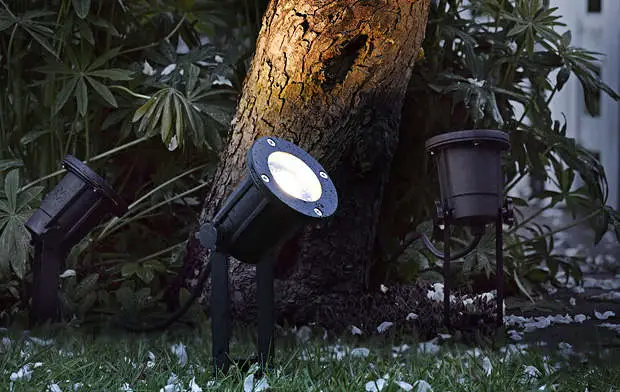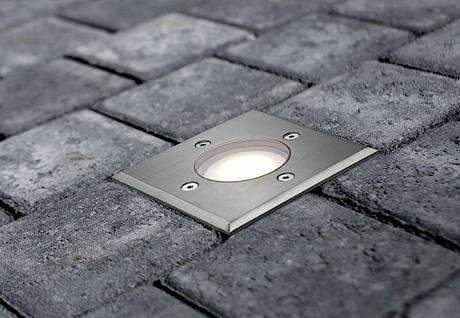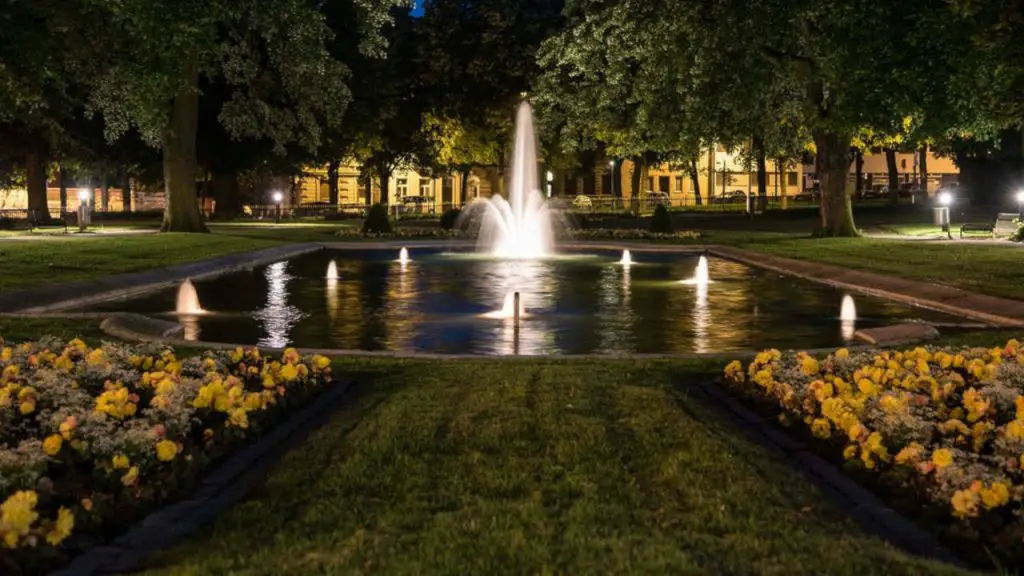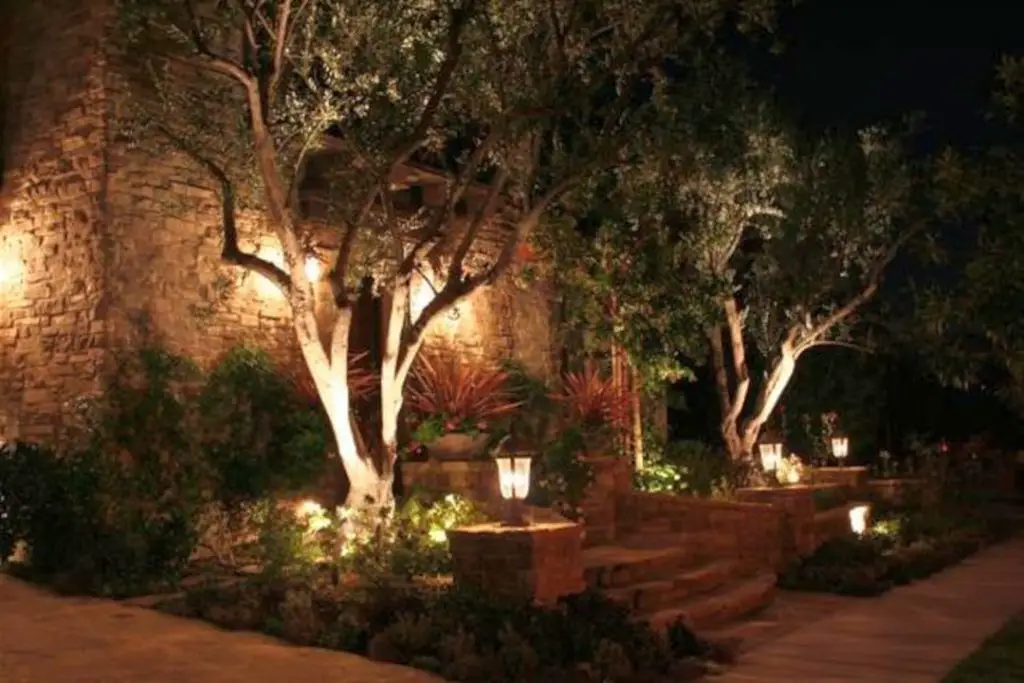Lighting for your Yard : Bring Your Outdoor Space to Life at Night!
Good lighting for your yard can be planned so that it gives your outdoor experience the kind of accent you enjoy most, improving visibility in changing weather or during long evenings and enhancing the atmosphere for your full enjoyment.
Landscape lighting can take a backyard from average to shining. There are many things to consider when trying to undertake a light-schematic on your own, but it is worth the effort.
Making a lighting plan
Putting lighting in your garden can make or break it, so be sure to spend time deciding exactly what kinds of lights you want and where they need to be.
Just like many things in life, less can be good. The less lighting you have not only can save on your power bill but also it will make your yard look more vivid. With only a few lights on the front, people are going to see the beauty of the landscaping and thus make a big impact when putting in lighting for your yard.
Deciding on Key Features
So after it is dark outside and you want to light the outside, the decision that you have to make what are you setting up to be lit and what are you leaving when it is dark? On order to decide here are a few things that you need to consider:
- Evaluate some of the features in your garden or yard that you like most. This could be a pond or a a specific tree just illuminating these with various colors and temperatures of light will showcase them.
- Add depth to sections of the yard that might not seem noticeable during the day. A particular wall can assume a completely new perspective at night when accentuated with the right light and or shadow.
- Definitely consider function. Stairs on decks or wandering pathways should be lit up so that you can move around the yard without hurting yourself.
- Garden illumination needs to be flexible: it requires the combination of fixed lights with the ones that can easily be moved. They should be able to tap in with the light as the seasons and growth of the plants change.
Draw a rough map of your garden, marking all the key features. Write which features you want to enhance, what you don’t want to do with, and anything you want to make as quiet as possible.
Consider lighting as you enter your home. A well lit entrance will show where to go safely while creating the appeal you want.
Understanding how to create different lighting effects
When lighting for your yard should generally have a different light type to create different effects across it: atmospheric, accent and illumination.
- A downlight’s good for lighting up doorways or decked areas. You can also use them to throw some light on where to walk to the plants or where to go. They’re usually really good at that, but you can use them in smaller amounts than the rest of the lights above. The smallest of them, the ones in the window or at a bench, separate an area off with their elegant glow.
- Uplighting helps to show the statue, installations, specific features such as on old tree, or other object that is high helping add a touch of drama to the scene.
- Crosslighting is when spotlights flood a feature in the area. Create such an effect by positioning spotlights on opposite sides of it. Spread out the lights to make the light sweet and less noisy.
- Using Spotlights and uplights is a great way to make something really stand out; you ca do this by positioning a directional spotlight or uplight some distance away from the feature to achieve this.
- Light washing can create interesting effects. For example, you can light wash an entire wall by placing a light at its base, the glow looks nice and enhances the color.
- Shadowing is another useful effect. You use shadowing to project a specific feature to a fence,wall or other large surface by placing and angling a spotlight at the foot of the feature.
- Silhouetting is when you take light that shines on the subject around features of said subject and adjacent structures. This creates a silhouette of the subject on a bright background on the other side.
- You can create a grazing effect which draws attention to a walls stonework by positioning uplights next to the said wall.
- Mirroring. Mirrored effect is achieved when one light be installed on the far side of a body of water to re-display its image in the mirror or dark water. A great effect when lighting for your yard
Lighting for your yard : Type of lighting options
Now, knowing what you are going to use when looking at lighting for your yard and the type off lighting effects that you can use, the quest becomes how exactly will you approach achieving the best results? There are quite a few different types of light fixtures that you should find familiar when developing your lighting plan. Following we look at different types and varieties of lighting which are suitable for outdoor spaces and yards.
Floodlights, spotlights or a combination of both

The first type of lighting that we will look at when considering the lighting for your yard are floodlights and spotlights. Both provide directional lighting but produce different lighting results. Spotlights rely on a narrow beam of around 45 degrees which highlights specific points. Floodlights on the other hand project an over the whole scene and are more adjustable.
Depending on the use case, then floodlights may be a better choice. For example, if you are looking for displays points like monument or architecture and don’t want any of the landscape features to be covered then consider spotlights. If you want a good presentation on what is happening in the scene without focusing on any single point.
It is worth noting that being able calculate the size of the light beam spread is not as important as knowing the size of the beam. You need to know how far the subject of your light needs to be illuminated so that it can reach all parts. You want to make sure that you’ll have enough light to reach your objective when you reach a certain distance for it.
You can easily work out your beam size using the following calculation:
Beam Angle x 0.018 x Distance Away from the Light = Beam Width
Inground light fittings

An inground light in general is circular-shaped fixture that is installed into the ground; it is often used to light the sidewalks and roads. Ground lights really fit the sophistication and the visibility of a home. It creates a wonderful feeling of atmosphere and drama using an uplight effect. It also can highlight the character’s physical form against a lone tree or something like that. They are at their best when mixed with spotlights when possible, but uplighting by itself can also be a good lighting solution.
When it comes to inground lights, the thing you’ll notice about them first is the light itself. With an inground light, make sure it’s used to light up powerful and presences on your yard. Don’t concern yourself about garden gnomes or small flowerbeds; focus on garden walls and trees.
Inground lights can also serve as a path to lights to help navigate through the gate and areas of the front of the property. They need special ratings that suctions to meet cars that go through them. You can choose one of these that is strong and firms up its weight durability. We suggest getting an LED option, since they have colors that are crisp in the dark, and can last for thousands of hours at a time. WAC Landscape Lighting LED 3 Inch Inground Light, is a perfect example of one of these in ground -lights.
Pathway lighting
Path lights are a common fixture outside of homes. They provide you with a light that makes the outdoor paths walking more safe and dangerous, often. These lights are put near your house on the ground or on up high so they can light up the whole yard.
When selecting your path lights when looking at lighting for your yard, think about the height. It is nice to have a light that evenly spreads across the ground when they are 14 inches high. in addition your paths should be less than 1 foot from the side of the walking path or walkway. Keep note of the size of the light around your fixtures and don’t install your lights in open areas because that will make things crowded.
It is important your lighting should be stable and constructed from materials that protect it against outdoor elements. Powder coated finishes have better resistance long-term to the outdoor elements while soda lime glass remains tough on all the seasons. LED lights are especially recommended, as they keep costs down with reduced electrical use and produce cool light with options for color intensity. Search for one that can improve the appearance and look of your home’s exterior.
Post Lights
One option for pathways when considering lighting for your yard are outdoor post lights. Post lights bring up the path to your house is vibrant and strong. They, the lights, also set the mood of the space. They, unlike the floodlights, do not overpower the area. Tall posts are good for long space and short lights are for evening paths.
Working out how many post lights you need is easy. Just find out what the diameter they cover and then add in 1 to 2 feet from it (depending on what feels better to you). If the height of the fixture isn’t too high, then you want it somewhere just outside of that circle. This will help prevent the yard from looking like an airplane runway. The fixtures go great by a walkway and you want to place them on either side of it, running it back and forth until it looks inviting.
Accent Lights for Landscapes
There are several different types of light that you can use to light up your landscape.
Step and deck lighting
The accent lights are installed to shine on the back of a house. They also can add safety to dark stairs and walkways on a deck, as well as use the lights on the sculpted stones on the house.
Water feature lights

Pond spotlights are a type of light used to illuminate a pond. They are typically mounted on a pole or anchored to the ground in the pond for optimal light. They are beneficial in that they can provide lighting for a pond at night, and they can also help draw out insects and other pond inhabitants.
Hardscape lighting
Hardscape lights are relatively new type of lighting. They were created because of newer technology in LED lighting. Tiny lights latch on to or into structures to light the walls and ground. This achieved because of how the brackets or flanges are installed to help create a velvety illumination for any walls that it is attached to.
Best way to light up your landscape
When looking at lighting for your yard it is possible to feel slightly overwhelmed with the options that effects that are available and the many types of lights and spaces to place them. The best thing you can do is take a good strong flashlight, that has a dimming optic, out one evening in the yard and try it out. Test it at various times as night fall and then once it is dark. Play with the light. See if there are any places that don’t look very magical, or if there are any places that don’t work very well.
Up Lighting
Type of Lights Used: Well lights, Spotlights

Whether it is lighting for your yard or in your house, deck lights can be used as different accents to architectural details and provide safe passage to dark areas like steps and hallways. Lights can also be for washing lightly over stone walls or outdoor gatherings or entertainment locations.
One of the most basic parts of landscape lighting is called up lighting. This can be used for something to have drama with tall trees or structures. You can either highlight the trunk or cover the underside of the leaves of a taller tree, or just the underside on trees that are shorter in size.
Silhouette lighting
Type of Lights Used: Well lights, Spotlights
Silhouetting another great effect for lighting your yard. It shows hidden dramatic curves of objects that are lurking on the surface. You can achieve this effect by positioning the light source behind the subject your looking at. Make sure that the light won’t show your subject, but can be seen from your vantage point.
Shadowing
Type of Lights Used: Floodlights, Well lights, Spotlights
Shadowing is the opposite technique to that of silhouetting. Put the light that will draw attention to the foreground perpendicular between your vantage point and the background. This is only effective when you have a surface to highlight the shadows created although it can bring a softer or more mood driven effect.
Grazing
Type of Lights Used: Hardscape Lights, Well lights
Grazing can be a great option in lighting for your yard if you have a flat concrete, wall or fence space. Grazing Grazing is placing the beam for close lighting and targeting it upwards on to the surface you are going to light in order to get a dramatic effect and shadow play. You can easily alter the effect by changing which way you’re aiming the light- you can go up or down, but you want to use uneven or irregular patterns to accentuate any textures on the planes surface You can add an upscale touch to your patios, as they often are seen in hotel conversions and restaurant space.
Moonlighting

Type of Lights Used: Spotlights
Moonlighting is an excellent light effect if you have larger trees in your background. The light source is placed high up in the tree and aimed downwards, washing the branches and ground below in light. It creates a great visuals if it is used in conjunction with large, open-branched trees.
Light washing
Type of Lights Used: Floodlights
Often an area needs more lighting that is ambient so that space will be bright enough. To create this effect, think about flooding an area in an entertainment place with lights so that it will fill the area with light. Use a light that will cast a wide, even beam of gentle light about the whole area. Positioned the light between the main vantage point and the surface.
Lighting for your yard: Technical considerations
It can be difficult to thoroughly light things in the landscape. Every time you want something lit, they will be subjective—so it can depend on how bright you wish to illuminate anything. Look for fixtures with adjustable light output, so then you can control the brightness by yourself.
The new way to light a place is with LED’s. They have a lower operating cost, more reliability and an extendable life. There is also a feature on them such as, adjustable beam spread.
It is important to remember when lighting for your yard that the best light for landscaping is determined by the colors of the objects that are being lit up. Warmer lights on hide a tree while darker colors on a pine tree and a dark exterior stone look better when using cooler colors. If you’re looking for a cool white, then the 4000-5000K variety would be best suited to ultramodern or commercial landscapes.
Lighting for your Yard: Frequently Asked Questions
What type of outdoor lighting is best?
Research indicates that light from a low-pressure sodium (LPS) bulb is most effective at preventing crime. LPS bulbs are orange-red in color. They are most effective when they are focused on areas of activity such as doors, driveways, or entrances to buildings.
Is lighting expensive?
Lighting is one of the least expensive crime prevention measures. The initial cost of the lights is quickly recovered through a reduction in crime, and the improved security will encourage more people to visit or do business in your neighborhood.
Is it difficult to install lighting?
Preliminary work such as laying underground electrical conduit, setting posts and/or mounting overhead electrical or telephone wire may be required. Once the power source and the location of the lights are determined, the actual installation of the lights is not difficult.
What are the types of garden lights?
Garden lights are available in various types.
Solar lights:
These are the most popular lights and are quite affordable. They are powered by solar energy. One needs to place the lights during the day in the sun.
Battery lights:
These lights are powered by batteries. They are the most popular lights and are quite affordable. One needs to change the batteries after a certain time.
Ground-based lights:
These are the most popular lights that are used by homeowners as lighting for your yard. They are the most efficient lights, as they are powered by electricity.
How do I choose the right outdoor light? What is the best option?
The first thing you need to do is decide where you want to mount the light. You can then determine if you need to mount the light on a wall or pole. If you’re mounting it on a pole, you’ll need to decide if you want to mount it on a tripod or a bracket.
The second thing you need to do is decide on a color temperature. You’ll need to decide if you want a light that is warm or cool. You can also consider the color of the light.
The third thing you need to do is decide on the beam spread. If you want to use the light for security purposes, you’ll want a light that has a narrow beam. If you want to light up a large area, you’ll want a light that has a wide beam.
The last thing you need to do is decide on the mounting options. If you’re mounting the light on a pole, you’ll want to make sure you have the right mounting bracket.
One should choose the light that suits one’s budget. One can take the help of a professional in order to choose the best lights for the garden.
How do I choose an outdoor light?
The first thing you need to do when looking at lighting for your yard is make sure you’re buying a quality light. You’ll need to see the information about the lumens and the wattage of the light. Higher wattage will give you more light. Look for lights that are rated at least 100 lumens per watt, as that will give you a good, strong light. Also compare the lumens to the wattage. If there is a big difference in the two you’ll get better performance from the light with lower wattage.
The second thing you need to do is look for lights that have a high number of lumens. These will provide more light, and sometimes are even brighter than indoor lights. In the past, many of these lights have been used for security purposes, and the way to tell the difference is to look for the model number. Most outdoor lights will have “LL” in the model number, while most indoor lights will have “L”.
The third thing you need to consider is the color temperature. Most outdoor lights have a higher color temperature to give you more light. Look for a high color temperature, such as 5000K or above. This will give you a light that is closer to daylight and will make it easier to see details.
The fourth thing you need to consider is the beam spread. Lights with a narrow beam will cast a smaller area of light, while lights with a wider beam will cast a larger area of light. The wider beam is preferred for lighting up long distances.
The last thing to consider is the mounting options. You’ll need to make sure you can mount the light where you want it. Look for poles that have mounting brackets and poles that have tripods. If you need to mount it on a wall, look for a wall mount option.
How do I install my outdoor light?
The first thing you need to do is make sure you have the right tools. You’ll need a screwdriver, drill, and a level. You’ll also need to know how to use these tools. You may also need to buy a new light bulb. If you’re buying a CFL, you can also purchase a replacement CFL.
The second thing you need to do is check the light. Make sure that the wire is attached and that the socket is in good condition. You should also make sure that the light is in the right location and that you have the right mounting hardware and tools.
The third thing you need to do is install the light. Begin by drilling the holes for the pole. You can use a drill bit that is larger than the hardware. Once you have drilled the holes, then you can insert the anchors. Next, you’ll need to insert the pole. You can use a screwdriver to tighten the pole from the inside of the pole.
The fourth thing you need to do is mount the light on the pole. You can use a screwdriver to tighten the light ring. Next, you need to install the light fixture. You can use a screwdriver to tighten the light fixture. The final step is to connect the wires.
How do I take care of my outdoor light?
The first thing you need to do is make sure when taking care of the lighting for your yard is that you have the right tools. You’ll need a screwdriver and a pair of pliers. You’ll also need to know how to use these tools.
The second thing you need to do is make sure you have the right type of bulb. If you’re using a CFL, you’ll need to make sure you have a replacement CFL.
The third thing you need to do is clean the light. You can use a sponge and some soapy water to clean the light. You should always clean the light after it rains.
The fourth thing you need to do is check the light. Make sure that the wire is attached and that the socket is in good condition. You should also make sure that the light is in the right location and that you have the right mounting hardware and tools.
The final thing you need to do is replace the bulb. You can use a screwdriver to remove the light fixture. You can then remove the bulb from the light fixture. You’ll need to remove the glass and then remove the bulb. You can then install the new bulb in the light fixture.
Final Thoughts: Lighting for your Yard
Lighting can be a great way to enhance both the look and the atmosphere of your backyard. It can really lend to other elements of your garden such as a fire pit or an event such as a barbecue or watching a movie in your yard.
